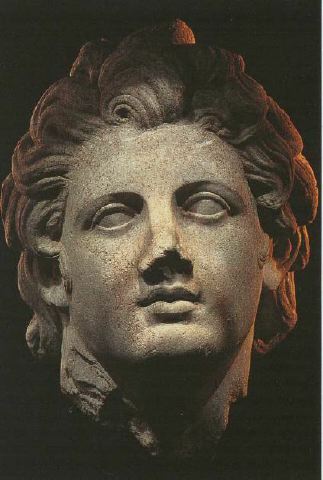
The
Persian Occupation of Cyprus
In
525 B.C. the Cypriot kings transferred their allegiance to the
Archaemenid (Persian) conquerors of Egypt. The Cypriots retained
their independence until the accession of Darius I (522 B.C.)
but were then incorporated into the fifth satrapy of the Persian
Empire.
When the
Ionians revolted in 499 B.C., all the kingdoms of Cyprus except
Amathus joined them; the revolt was suppressed in about a years
campaigning, culminating in sieges of Paphos and
Soli.

Alexander the Great
Xeres I's
invasion of Greece in 480 B.C. the Cypriot kings, like the
Ionians, contributed naval contingents to his forces. During the
5th century Cyprus remained under Persian rule in spite of a
major Athenian expedition there in 450/ 499 B.C. Evagoras, who
became king of Salamis in 411 B.C., maintained a pro-Hellenic
policy, with some help from Athens and succeeded in extending
his rule over a large part of the island. He was defeated by the
Persians in 381 B.C. and was assassinated in 374 B.C.
After the
victory of Alexander the Great over the last Archaemenid ruler,
Darius III, at Issus in 333 B.C., the Cypriot kings rallied to
Alexander and assisted him at the siege of Tyre. During the
period from 475-325 B.C., known conventionally as the Classical
Period, Cypriot art came under strong Attic influence.
References
